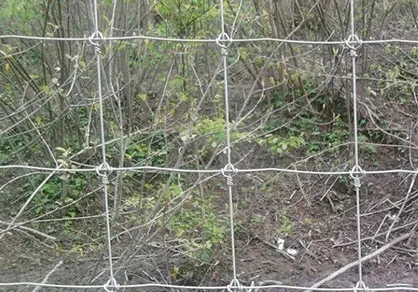Understanding Mesh Wall Construction A Modern Solution for Versatile Needs
In the realm of contemporary construction, mesh wall construction has emerged as a highly efficient and versatile method, catering to a myriad of applications across various sectors. This innovative approach utilizes mesh materials—typically made from welded wire or expanded metal—to create sturdy, lightweight wall structures that provide both functionality and aesthetic appeal. With its unique blend of durability, ease of installation, and adaptability, mesh wall construction is becoming increasingly popular among builders, architects, and homeowners alike.
Benefits of Mesh Wall Construction
One of the primary advantages of mesh wall construction is its structural strength. Despite being lightweight, mesh materials are designed to withstand significant loads and resist environmental pressures, such as wind and seismic forces. This makes them ideal for a variety of applications, including residential, commercial, and industrial buildings. Additionally, the open nature of mesh walls allows for excellent ventilation and natural light, creating a more pleasant living or working environment.
Another significant benefit is the speed and ease of installation. Traditional wall construction methods can be labor-intensive and time-consuming, often requiring extensive groundwork and long curing periods for materials like concrete. In contrast, mesh panels can be installed quickly, often resulting in considerable time and cost savings. This efficiency is particularly advantageous in fast-paced construction projects, where deadlines are typically tight.
Versatility of Applications
Mesh wall construction is incredibly versatile, making it suitable for various settings. In the agricultural sector, for example, it can be used to construct animal enclosures or fencing that provides security while allowing for airflow. In urban environments, these walls can serve as decorative yet functional barriers, providing security while enhancing aesthetic appeal. Furthermore, in industrial contexts, mesh walls can be used as partitions, offering both visibility and segregation in spaces like warehouses.
Sustainability and Environmentally-Friendly Practices
mesh wall construction

In today’s environmentally-conscious world, the use of sustainable materials and practices in construction has gained prominence. Mesh wall construction often incorporates recycled materials, aligning with eco-friendly initiatives. Additionally, the lightweight nature of mesh materials can reduce transportation emissions during delivery, contributing to a lower carbon footprint for construction projects.
Design Flexibility
The design possibilities with mesh wall construction are virtually endless. The sheer variety of mesh materials allows architects and builders to innovate and create structures tailored to specific needs. Whether it's for a modern home with an industrial aesthetic or a commercial building requiring functional yet stylish partitions, mesh walls can be customized in terms of shape, size, and finish.
Challenges to Consider
Despite its many benefits, there are challenges to consider when opting for mesh wall construction. For instance, the lack of total privacy might not be suitable for all residential applications, necessitating additional treatments for certain environments. Additionally, while mesh is resistant to many elements, it may require periodic maintenance to prevent rust or damage in harsh environments.
Conclusion
In conclusion, mesh wall construction represents a forward-thinking approach in the construction industry, offering a blend of strength, efficiency, and design flexibility. As builders and architects continue to explore innovative construction methods, mesh walls will likely play a significant role in shaping the future of modern architecture. Whether for residential, commercial, or agricultural uses, mesh wall construction stands out as a practical solution ready to address the evolving needs of various sectors, making it a worthy consideration for any construction project.

















